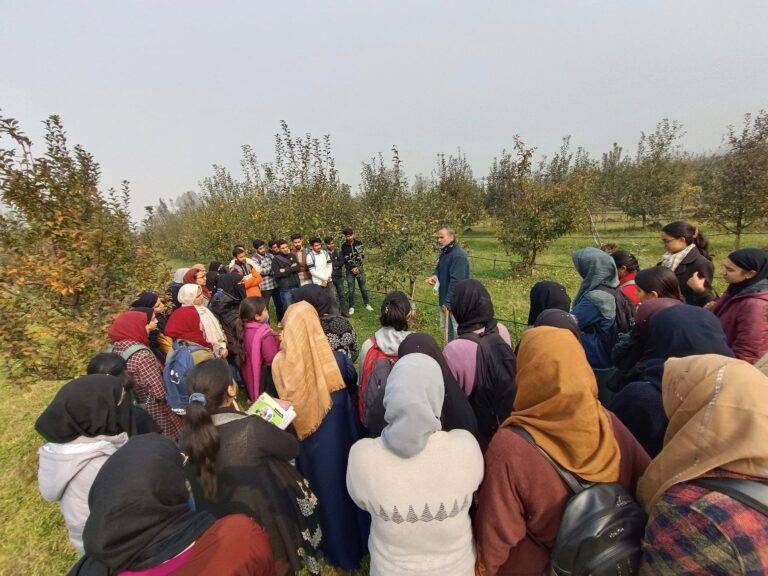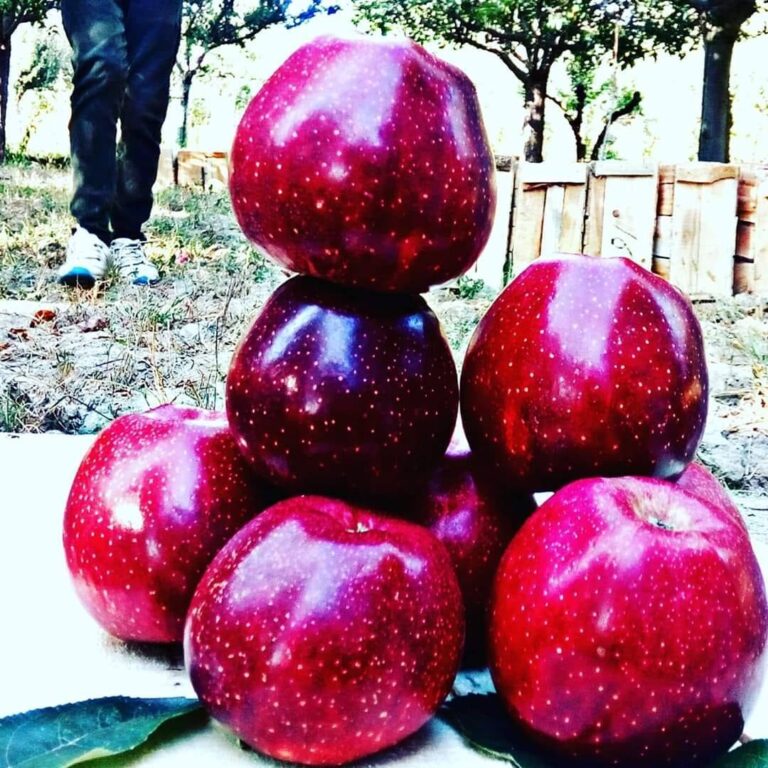National Saffron Mission Fails to Revive Jammu and Kashmir’s Saffron Industry: 67.5% Decline in Production Despite ₹400 Crore Investment
Saffron, often referred to as “the spice of life,” has been a symbol of the rich cultural heritage of Jammu and Kashmir for centuries. The vibrant purple flower that yields this coveted spice is traditionally grown in the region’s high-altitude fields, particularly in areas like Pampore, which has been famously dubbed as the “Saffron Bowl of India.” Saffron farming has provided livelihoods to countless farmers and has been an integral part of the local economy. However, despite the launch of the National Saffron Mission (NSM) in 2010 to rejuvenate saffron cultivation and reverse the decline in production, the mission has largely fallen short of expectations.
Over the past 13 years, saffron production in Jammu and Kashmir has experienced a sharp decline of 67.5%, from 8 metric tons (MT) in 2010-11 to just 2.7 MT in 2023-24. While there was a slight recovery in the last year, with an 8% increase in production, the overall situation remains alarming for saffron farmers and the economy of Jammu and Kashmir. The continued decline raises serious concerns about the efficacy of the National Saffron Mission and its ability to address the underlying issues impacting saffron farming.

The Genesis of the National Saffron Mission (NSM)
The National Saffron Mission was launched in 2010 with the primary objective of reviving saffron cultivation in Jammu and Kashmir, especially in light of the sharp decline in both quality and quantity of saffron production. The Mission aimed to tackle the multiple challenges faced by the saffron sector, such as declining yields, lack of proper irrigation infrastructure, outdated farming practices, and environmental threats like climate change and water scarcity.
The objectives of the NSM were multifaceted and ambitious:
- Rejuvenating Existing Saffron Fields: Improving the productivity of existing saffron fields by using better techniques, irrigation systems, and farm management practices.
- Enhancing Irrigation Facilities: Introducing modern irrigation techniques, including bore wells and sprinkler systems, to ensure a steady water supply to saffron fields, particularly in regions affected by water scarcity.
- Improving Post-Harvest Practices: Enhancing the quality of saffron after harvest through mechanization and improved processing methods.
- Boosting Quality and Certification: Developing high-quality planting material and ensuring that saffron grown in the region meets international quality standards. This included setting up weather stations, e-trading platforms, and mechanisms for quality certification.
- Supporting Marketing and Price Realization: Establishing infrastructure such as the India International Kashmir Saffron Trading Centre (IIKSTC) to help farmers with processing, marketing, and ensuring better price realization through e-auctions.
These interventions were meant to elevate the saffron sector by addressing long-standing problems and bringing technological advancements to improve both yield and quality. However, despite the ambitious nature of these objectives, the mission’s implementation has been marred by inefficiencies, delays, and poor execution.
Declining Saffron Production: A Stagnant Crisis
Since the inception of the National Saffron Mission, saffron production in Jammu and Kashmir has witnessed a steep decline. In 2010-11, the region produced around 8 metric tons of saffron, a figure that has now plummeted to just 2.7 metric tons in 2023-24. This is a staggering 67.5% decrease over the span of 13 years, and this sharp drop is a direct reflection of the failure to address the challenges faced by saffron farmers effectively.
Several factors have contributed to the crisis in saffron cultivation, and the NSM’s inability to mitigate these factors is a major reason behind the continued decline. Some of the most prominent challenges include:
1. Inadequate Irrigation Infrastructure
One of the most critical issues plaguing saffron farming in Jammu and Kashmir has been the lack of adequate irrigation infrastructure. Saffron fields are particularly vulnerable to water scarcity, and irrigation plays a crucial role in ensuring high yields. As part of the National Saffron Mission, the government promised to build irrigation infrastructure, including 128 bore wells and sprinkler irrigation systems to improve water availability in saffron fields.

However, out of the 128 bore wells planned, only 85 have been completed so far. This delay in completing essential irrigation infrastructure has significantly affected the productivity of saffron fields. Farmers are still dependent on traditional methods of irrigation, which are inefficient and inadequate to meet the water needs of saffron crops, especially during dry periods. Consequently, crop yields have continued to suffer, with many fields producing lower-quality saffron.
2. Climate Change and Environmental Degradation
Climate change has emerged as another significant threat to saffron cultivation in Jammu and Kashmir. The region’s saffron fields are highly sensitive to fluctuations in temperature and rainfall patterns. Warmer temperatures, erratic rainfall, and prolonged dry spells have had adverse effects on the flowering cycle of saffron, leading to poor yields and compromised quality.
The National Saffron Mission did acknowledge the environmental challenges posed by climate change, and part of the mission’s objectives included conducting research to develop climate-resilient saffron varieties. However, the pace at which these initiatives have been implemented has been slow, and the lack of climate-resilient varieties has left farmers vulnerable to the unpredictable weather patterns.
In addition to climate change, the increasing industrial activities and urbanization around saffron fields have contributed to environmental degradation. Saffron fields are increasingly being encroached upon, and industrial pollution from nearby factories has further threatened the delicate ecosystem required for saffron cultivation.
3. Lack of Mechanization and Poor Post-Harvest Practices
Another area where the National Saffron Mission has fallen short is in improving the post-harvest practices and mechanization. While the mission aimed to modernize saffron processing, mechanization and technology adoption have been limited in practice. Saffron is still largely processed manually, which is time-consuming and results in inconsistent quality. Modernization and mechanization could help reduce wastage and improve the overall quality of saffron, which is crucial for its competitiveness in the global market.
The mission’s promise of enhancing post-harvest quality through mechanization has largely remained unfulfilled, and farmers continue to rely on traditional methods of drying and processing the saffron flowers, which do not always meet international standards.
4. Financial Mismanagement and Lack of Accountability
Despite an investment of ₹400 crore under the National Saffron Mission, concerns remain about the mission’s implementation and the utilization of funds. No formal inquiry has been ordered to evaluate the mission’s outcomes, which raises questions about the efficiency and transparency of fund allocation. Delays in completing key projects, such as irrigation infrastructure and the establishment of weather stations, further suggest a lack of accountability and effective governance.
The absence of a comprehensive review or audit of the mission’s results has led to suspicions about the mismanagement of resources, which could have been better utilized to address the critical issues facing saffron cultivation.
The Role of the India International Kashmir Saffron Trading Centre (IIKSTC)
One of the positive aspects of the National Saffron Mission has been the establishment of the India International Kashmir Saffron Trading Centre (IIKSTC), which was designed to help farmers with processing, marketing, and ensuring better price realization through e-auctions. This initiative aimed to provide farmers with a one-stop solution for all aspects of saffron trading, from processing to marketing.
The IIKSTC is supposed to create a platform for the international sale of saffron, ensuring better visibility and price realization for Jammu and Kashmir’s saffron in global markets. While the establishment of the IIKSTC was a welcome move, its impact has been limited. Farmers still face challenges in accessing international markets and getting fair prices for their saffron. The lack of adequate infrastructure and market access continues to be a barrier to achieving the potential of this initiative.

Conclusion: The Future of the National Saffron Mission
The National Saffron Mission was launched with the aim of restoring Jammu and Kashmir’s saffron industry to its former glory, but 13 years on, the results have been disappointing. Despite the investment of ₹400 crore, saffron production has continued to decline due to multiple factors, including inadequate irrigation infrastructure, climate change, poor post-harvest practices, and lack of financial transparency.
While the mission has had some successes, such as the establishment of the IIKSTC, its failure to address the core issues affecting saffron cultivation in Jammu and Kashmir has been a major setback. The mission’s delayed implementation and lack of proper monitoring and evaluation have led to a situation where the region’s saffron industry continues to struggle.
Moving forward, it is crucial for the government to reevaluate the National Saffron Mission, conduct a thorough review of its progress, and take corrective measures to ensure the sustainability of saffron cultivation. Addressing the challenges faced by saffron farmers through better irrigation facilities, climate-resilient varieties, mechanization, and effective marketing solutions could provide the necessary boost to revive the saffron industry and restore Jammu and Kashmir’s position as the world’s premier saffron producer.
You Might Also Like :
Double-Storey Residential House Gutted in Dardihaji Rajwar Handwara
Kashmir’s Agricultural Splendor: A Tapestry of Treasures from Saffron to Mushrooms
The Golden Essence: Saffron’s Journey from Field to Spice
Reviving Kashmir’s Saffron Heritage: Why Operationalising Bore Wells is Key to Sustaining Pampore’s Saffron Cultivation
Mudasir Ahmad Bhat Pioneers Saffron Cultivation in North Kashmir: A New Agricultural Era






